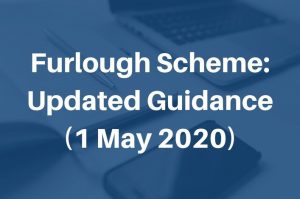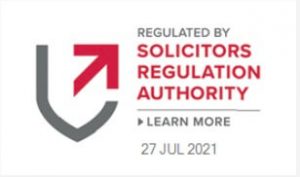Breaking News- the Coronavirus Jon Retention Scheme is extended to 31 October 2020. More details will be provided by the end of May. The headlines are that the scheme will continue as is until August, from August to October there will be greater flexibility to bring furloughed employees back part time.
New, clearer guidance has been issued by HMRC on the Coronavirus Job Retention Scheme. Some of the unanswered questions are now answered, including:
- Can an employee start a new job with a different employer if on furlough leave with us?
- Can commission payments be claimed as part of the 80% grant?
- Do we have to confirm furlough arrangements in writing?
- Is the HMRC portal open?
- When can we expect payment?
Following the mandatory closure of many businesses and in order to support all businesses affected by Covid-19, the Government has launched the scheme which allows you to temporarily furlough employees and claim back 80% of their salary up to a maximum of £2500. The scheme is designed to preserve as many jobs as possible during the current economic downturn and avoid redundancies and workplace closures. It was initially available for 3 months from 1 March 2020 and has now been extended to 31 October 2020 and claims under the scheme can be dated back to 1 March 2020. This is a grant and will not have to be paid back.Furlough is another term used for lay off but has been adopted specifically to define leave under the Coronavirus Job Retention Scheme. Staff will be asked to agree to a change to their terms and conditions to allow them to be sent home due to lack of work instead of being made redundant. They will remain employed and on payroll during this time. They must not undertake any work whilst on furlough which includes any services or activities which generate revenue.[/vc_toggle][vc_toggle title=”Who can use the scheme?” style=”arrow” color=”black”]The scheme is open to all businesses regardless of size, turnover or number of employees. It is not envisaged that the scheme will be used by many public sector organisations and any business who receives public funds to pay employees will be expected to continue using public funds to pay wages not furlough. Businesses, especially charities should think carefully about their income sources before using the scheme to furlough staff.
You must have created and started a PAYE scheme on or before 19 March 2020 2020, enrolled for PAYE online and have a UK bank account.[/vc_toggle][vc_toggle title=”Who can be furloughed?” style=”arrow” color=”black”]Anyone who was on PAYE payroll on or before 19 March 2020 can be furloughed. This includes full time, part time, zero hours, fixed contract, apprentices and agency workers.
Self-employed individuals are not covered by this scheme but the Government have set up the Self-employment Income Support Scheme.
If you made employees redundant, or they stopped working for you on or after 28 February 2020, you can re-employ them, put them on furlough and claim for their wages from the date on which you furloughed them through the scheme. This applies to employees that were made redundant or stopped working for you after 28 February, even if you do not re-employ them until after 19 March. This applies as long as the employee was on your payroll as at 28 February and had been notified to HMRC on an RTI submission on or before 28 February 2020. This means an RTI submission notifying payment in respect of that employee to HMRC must have been made on or before 28 February 2020
Annual leave will accrue whilst they are employed and this is something you should consider before agreeing to rehire employees.
If an employee is on sick pay then they can be furloughed once they are no longer receiving statutory sick pay. You can also furlough employees on unpaid leave due to childcare issues or employees who are shielding and unable to work from home and you would otherwise have to make them redundant.
You can also claim for office holders, salaried LLP members and limb (b) workers provided that they are paid by PAYE.You will be able to claim back 80% of an employee’s salary up to a maximum of £2500 along with Employer National Insurance Contributions and minimum automatic enrolment employer pension contributions, provided that they were on your payroll, on or before 28 February 2020. Salary includes any regular payments you have to pay including past overtime and compulsory commission but does not include discretionary bonuses or non-monetary benefits.
Salary will either be your employees fixed salary as of 28 February 2020 or if they receive variable pay, the higher of:
- The same months earnings from the previous year;
- Average months earnings from 2019/2010 tax year.
If they have worked for you for less than 12 months then you will need to take an average from the time they have worked for you.
If you have reduced hours or cut wages then you cannot claim for the difference or top up their wages using the scheme.
The employee will still need to pay Income Tax and Employee National Insurance, as well as pension contributions and student loan repayments.
The National Minimum Wage and National Living Wage does not apply to an employee who has been furloughed, unless they are asked to complete training whilst on furlough. During the training, you need to ensure that the payments they were receiving are in line with minimum wage (which increased on 1 April 2020) or top up the pay if the payment falls below national minimum wage.
You can choose to top up an employee must be furloughed for a minimum of 3 consecutive weeks. You can furlough more than once but each instance must be a for a minimum of 3 weeks.You will need to obtain your employee’s agreement to change their terms and conditions. You should obtain their consent in writing and keep a copy of this consent for 5 years. You do not need to furlough all of your employees so careful consideration needs to be given to their duties, as they cannot undertake any work for you whilst they are furloughed. When selecting employees for furlough, you should be mindful of discrimination laws which will continue to apply.
The HMRC portal became live on 20 April and it is expected that employers will receive payment by the end of April. If an employee refuses furlough, you can consider requiring them to take annual leave by giving at least twice the amount of notice of the length of leave you are requiring them to take. You may also be able to consider traditional lay off and short time working if this is already in your contract of employment. Another option is to consider making redundancies. Yes, the new guidance is now clear that if the employee’s contract of employment allows, or you as an employer give consent, an employee can be furloughed and find alternative employment whilst receiving furlough pay from you. An employee on statutory sick pay should continue to receive this and they cannot be furloughed until their sick pay has ended. Similarly, an employee who is on contractual sick pay cannot be furloughed until they return to work. An employee on maternity leave or other family leave will continue to be entitled to statutory payments, which cannot be claimed back through the scheme. If you are paying enhanced contractual payments, then these can be claimed through the scheme.An employee can be asked to complete training whilst on furlough however you must make sure that an employee is receiving the national minimum wage for the hours that they are in training. Apprentices can continue with training provided they receive the Apprenticeship minimum wage.
If an employee wishes to volunteer, they can do so provided that they do not provide services to or generate revenue for your business.Firstly, before making this decision, please make sure that you have considered all the support available by the Government and accessed any local support available to you. If you still believe redundancies are necessary, then you should obtain legal advice and support before starting any redundancy procedure.An employee can take annual leave whilst on furlough. This could be pre-planned annual leave or you may require your employees to take annual leave by giving then the necessary minimum notice which is twice as much notice as the amount of leave you would like them to take. Annual leave must be paid at full pay but it is not yet clear whether 80% of this cost can be claimed back through the scheme.
Annual leave will continue to accrue during the furlough period.The Government website makes it clear that everything you do is still subject to normal employment law considerations so you MUST follow processes if you want to protect the business against employment tribunal claims. Sadly, we have already seen employees raising grievances where their employer has not followed the right procedure in making them redundant, as well as unlawful deduction from wages claims.
If you are an existing Watertight client most of our advice and letters will be included in your package cost, so please check with us before you take action.
If you are interested in a quote for Watertight contact us on [email protected]
For ad hoc help we can give you some free advice through our regularly updates factsheets, or we can give you a cost for letters and advice.
Most of our advisors are working from home currently and its business as usual for the time being.
Call us on 0114 3032300 or email [email protected]







